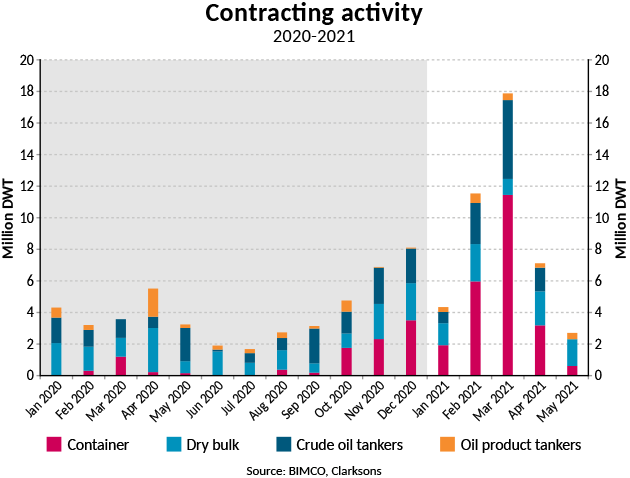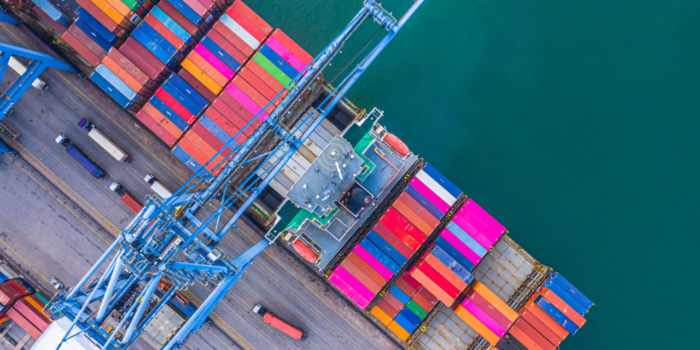Total orders of dry bulk, tanker, and container ships have jumped 119.7% in the first five months of the year compared with the same period in 2020, according to BIMCO.
A total of 43.6m DWT of orders have been placed at shipyards so far in 2021, while 49m DWT was ordered in all of 2020; a jump primarily driven by record-high container ship contracting, as investors in this segment find themselves flush with cash, noted BIMCO’s Chief Shipping Analyst, Peter Sand.
In the container ship segment, a total of 2.2m TEU has been ordered. This is more than 12 times higher than the 184,254 TEU ordered in the first five months of 2020 and more than 60% higher than the previous record dating back to the start of 2005.
The vast amount of money pouring into container shipping is finding its way into the shipyards, with the current tightness in the supply of ships incentivizing some owners to expand their fleets. Although also making good money in the current market, dry bulk owners have been more reluctant to order new tonnage, with the second-hand market proving more popular,
…explained Mr. Sand.
 Demand for new crude oil tankers has also been strong, up 47.4% from the first five months in 2020, despite the freight market being much more profitable than currently. However, oil product tankers have seen a fall in contracting, whereas dry bulk contracting, despite the strong freight and S&P markets, is only slightly above last year’s level.
Demand for new crude oil tankers has also been strong, up 47.4% from the first five months in 2020, despite the freight market being much more profitable than currently. However, oil product tankers have seen a fall in contracting, whereas dry bulk contracting, despite the strong freight and S&P markets, is only slightly above last year’s level.
The tanker market is split in two. We are seeing a rise in contracting for crude oil tankers, as owners who filled their coffers during the height of the market last year are betting on a better market when the ships are delivered, whereas oil product tankers are proving less popular,
…he said.
The most popular ship type, measured in TEU as well as number of ships, has been Ultra Large Container Ships (ULCS) which have a capacity of 15,000 TEU or higher. 89 of these have been ordered with an average capacity of 16,622 TEU.
This however masks that no ships between 16,000 and 23,000 have been ordered, with demand polarised between 15,000 and 16,000 TEU ships on one side and 24,000 TEU+ ships on the other.
In fact, there are 14 orders for ships between 24,000 and 24,100 TEU, larger than the biggest ship currently in the fleet which has a capacity of 23,964 TEU. Far more popular have been 15,000 to 16,000 TEU ships of which 75 have been ordered, totaling 1.1m TEU.
The three big shipbuilding nations are the only ones to have cashed in on the high container ship contracting, with China winning the most deals (145), South Korea in second place (63), and Japan rounding out the trio (21).































































